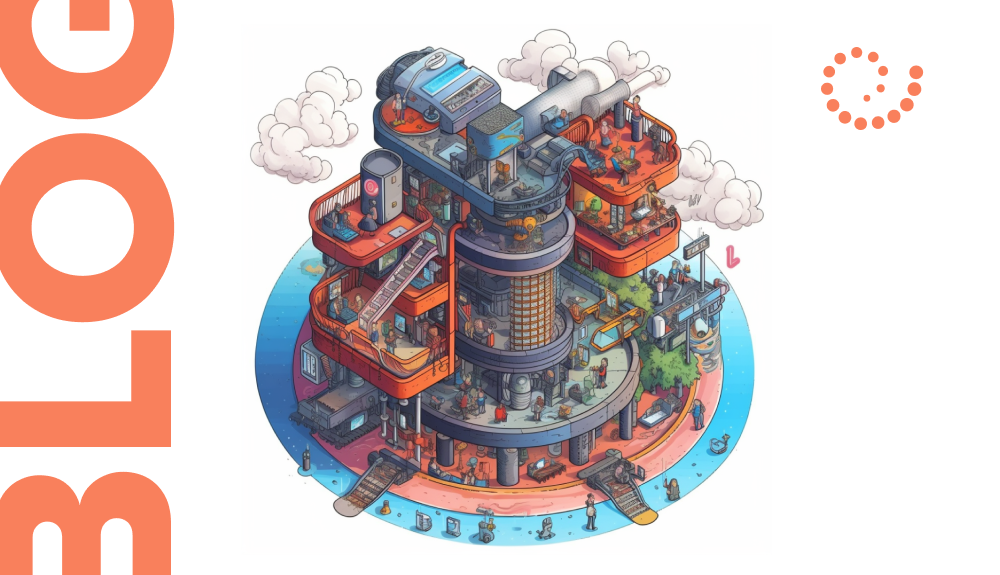
DevOps and AWS Cheatsheet by Setronica
Info Setronica | May 19th, 2023
Welcome to our DevOps Glossary. This guide is designed to help you better understand the world of cloud computing and automation. With the rise of cloud infrastructure and agile development practices, DevOps has become an essential aspect of modern software development. Our team of experts has created this comprehensive glossary to provide you with the knowledge you need to navigate the complex world of DevOps and utilize the powerful tools and services offered by AWS and other cloud providers. Our DevOps services are available to help you scale your infrastructure, manage containerized applications, and streamline your development pipeline, allowing you to achieve your goals and drive your business forward.

What do DevOps engineers do? DevOps is a combination of the words ‘development’ and ‘operations’, reflecting the integration of these disciplines into a unified, continuous process. Developers and testers are responsible for the development aspect, while administrators handle the operations side. DevOps is a development methodology that helps establish effective collaboration between developers and other IT professionals. It is a set of processes and tools that enable organisations to build and improve products faster than traditional software development approaches.
Glossary
DevOps — is the configuration and management of infrastructure, including servers, virtual machines, CI/CD, and the setup of development/staging/production environments, to enable the launch of up to 14 servers per hour.
CI (continuous integration) — is the automatic merging of branches in repositories for commits. It launches tests and linters (such as SonarQube), and after that sends the code to a specific virtual machine given by provider (such as AWS).
CD (continuous delivery) — is the configuration of auto-deployment.
Provider — is a company (such as AWS, Yandex.Cloud, or Hetzner) that rents out cloud infrastructure, such as servers and virtual machines.
Stack — is software used to manage servers, checking their vitality and connecting/disconnecting them from the network.
Instance — is an individual server, on which a virtual machine is located. Instance is often being located remotely with remote access.
Security group (SG) — is a firewall that controls access to the instance-level server.
Virtual machine (VM) — is a remote server with an installed operating system that enables the quick creation, configuration, and deletion of virtual machines using Terraform code.
Supervisor — is software for managing multiple virtual machines.
Terraform — is a tool for managing infrastructure (servers, virtual machines) as code. It declares the provider, resources, modules, DNS, and security groups as variables, allowing for configuration changes. Unlike YAML, Terraform allows for infrastructure creation and management.
YAML (Yet Another Markup Language) — is a language for describing application configurations.
Docker — is software for running Docker containers on any OS.
- Docker container — is an isolated environment of a server instance image (a system and driver image and additional code).
- Docker-compose — is a container builder. Typing ‘docker compose up’ in the terminal builds the code into containers.
- Docker Swarm — is for managing a large cluster of containers for high availability.
Load balancer — automatically redirects application’s requests to a less congested server during high traffic.
Kubernetes — is software for managing clusters of images (analogous to Docker Swarm).
AWS
AWS EC2 (Elastic Compute Cloud) — a virtual computer with an operating system.
Auto Scaling — automates the addition/removal of EC2 instances based on application traffic load.
Google Cloud Engine (GCE) — an EC2 analog.
ECS (Elastic Container Service) — manages, launches, and scales Docker containers on AWS.
ECR (Elastic Container Registry) — a repository for storing Docker images.
- ECR can be used to store Docker images that can be deployed anywhere Docker is supported, including Amazon Elastic Container Service (ECS), Kubernetes, and Docker Swarm.
AWS Lambda — a cloud computing service that allows code to be run in the cloud without the need to manage infrastructure. It allows you to create functions that respond to events and are automatically triggered. Unlike EC2 instances, Lambda does not require server hosting.
S3 (Simple Storage Service) — a file storage service (including databases and multimedia files).
- For example, if we store an image in S3, it will be accessible via a link, similar to uploading an image to Google Drive and then sharing the link.
- S3 Buckets — root-level folders.
- For GDPR compliance, S3 has a license to store passports and other sensitive information.
IAM (Identity and Access Management) — access and authorization management on AWS – allows management of users, groups, and roles, as well as configuring access to resources on AWS.
- IAM users — users who have been granted access to an AWS account.
Route53 — a DNS naming service on AWS. It allows you to register a domain name and configure it to route requests to web applications and other services.
RDS (Relational Database Service) — a service for managing relational databases on AWS. It allows you to manage and scale relational databases such as MySQL, PostgreSQL, Oracle, and SQL Server.
RDS — DBMS for relational databases (which are essentially sets of tables with relationships) — like pgadmin (client for a database) for Postgres (database), but in the cloud.
DevOps as a Service
Setronica is a trusted provider of DevOps services that can help streamline your development and operations processes. Our team of experienced professionals can assist you in designing and implementing a scalable and robust infrastructure on AWS cloud platform. Whether it’s setting up auto-scaling, managing Docker containers, or configuring DNS services, Setronica has got you covered.
Let’s start building something great together!
Contact us today to discuss your project and see how we can help bring your vision to life. To learn about our team and expertise, visit our ‘About Us‘ webpage.

Recent Posts
- How to Efficiently Scale Your Startup’s Tech Stack for Maximum Growth
- Shine in Your Interview: 3 Dos and Don’ts to Prove Your Competence with Confidence
- Elevator Pitch: How to “Sell” Yourself in One Minute
- 9 Best Places to Find Free Datasets for Your Next Project
- 9 Key Measures to Protect Digital Assets and Ensure Data Integrity
